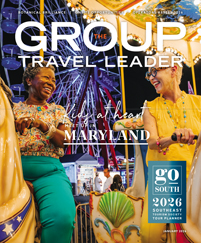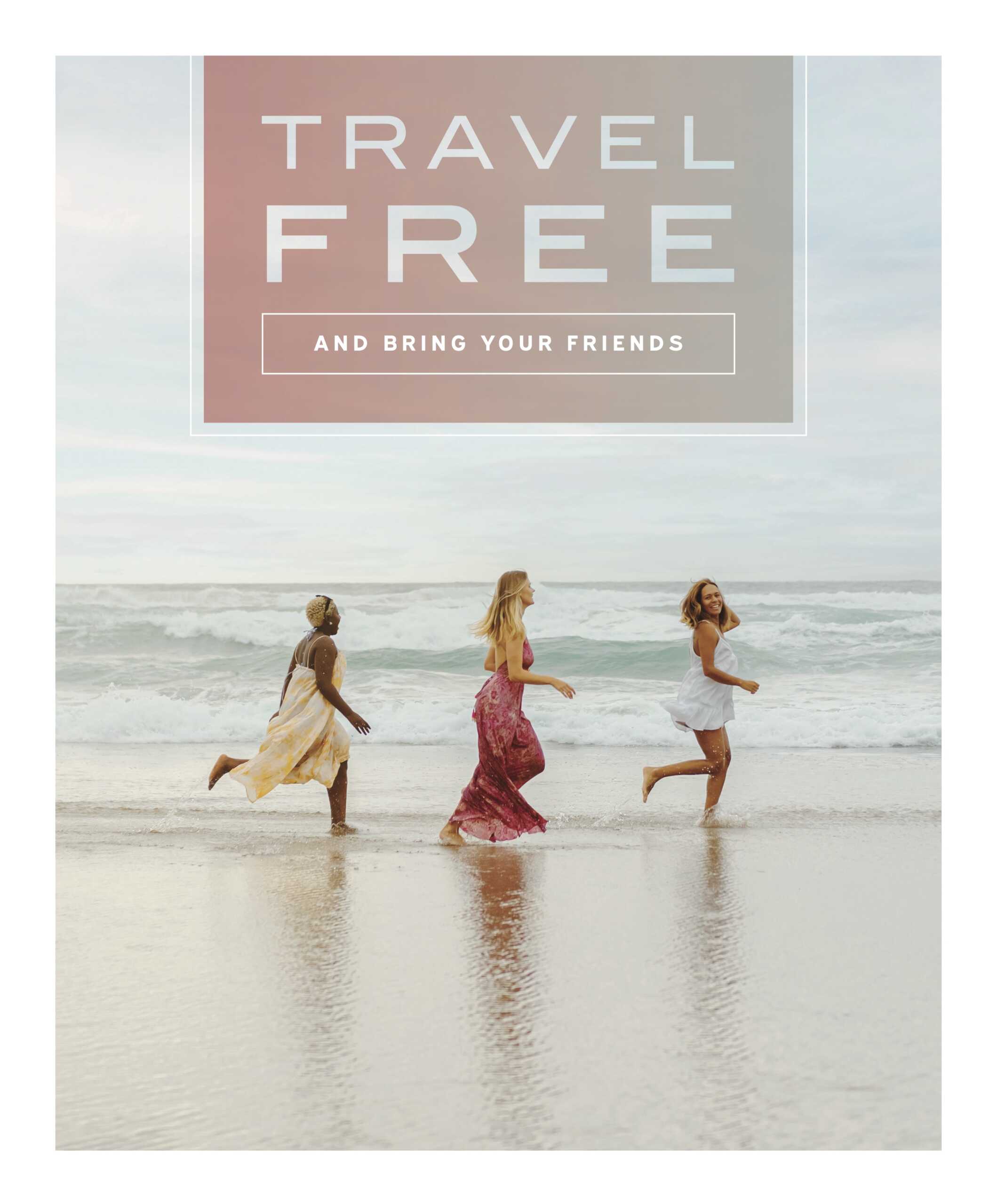“Everything that has happened in the U.S. has a connection here.”
That’s Jim Coggin, tourism sales manager at Visit Virginia Beach, bragging about his state. He was talking specifically about Virginia’s role in American history, but he would have been on similarly solid ground talking about Virginia as a showcase for all things cultural — both domestic and international.
Building itineraries around Virginia’s many cultural and historical attractions is a breeze. Destinations can take tour clients to ancient Rome, to Shakespeare’s England, to Colonial America and even to performances of entertainment giants such as James Taylor, John Legend and Steve Winwood. From the Tidewater region to the Shenandoah Valley to the rolling hills of Northern Virginia, choices abound. Here’s a sample.
Virginia Beach and Norfolk
Your group can start with a lighthearted photo with the mythological Roman god of the sea, Neptune. Virginia Beach’s Neptune is a 34-foot-tall bronze statue that is a landmark on the city’s boardwalk. The statue is also the inspiration for the annual Neptune Festival, a September celebration for more than half a century, that is filled with music, food and more sculptures. Specifically, the festival invites world-class sand sculptors to create gigantic — although temporary — scenes on the beach while surfers ride the waves behind them.
More permanent works can be found in the adjacent city of Norfolk at the Chrysler Museum of Art, with its 50 galleries and more than 35,000 paintings, sculptures and other pieces of art. Of special note at the Chrysler Museum of Art is the Perry Glass Studio, which more than tripled in size in 2024, expanding from 9,200 square feet to 33,200 square feet. The enlarged space enhances the museum’s international reputation in the world of glass arts and includes a 200-seat amphitheater “hot shop” that gives your group up-close-and-personal views of live performances and glassblowing demonstrations.
“For visitors who want to try a hands-on, first experience with the material, the facility and teaching staff are designed and equipped to create a memorable and safe experience,” said Robin Rogers, glass studio manager and program director.
Beyond the museum, Norfolk is famous for public displays of glass art. Visit Norfolk says the city has more free art glass to see than any other city. As delicate as glass art is, Norfolk provides a contrasting attraction that projects unbending strength — the USS Wisconsin, the largest and last battleship the U.S. Navy built. The gigantic battleship, now a museum, is part of Nauticus, a maritime discovery center on the downtown waterfront.
Historic Triangle
Virginia’s Historic Triangle — the storied region encompassing Jamestown, Williamsburg and Yorktown — is laden with historic and cultural attractions. The Jamestown Settlement, Colonial Williamsburg and the American Revolution Museum at Yorktown are three perennially popular major attractions here, along with the modern novelty of the Busch Gardens Williamsburg theme park.
Colonial Williamsburg, which marks its 100th birthday in 2026, is the world’s largest U.S. history museum — 301 acres of the original Colonial city, 89 original buildings, 515 reconstructed buildings, plus lodging, restaurants and abundant programs.
Colonial Williamsburg’s two art museums — the Abby Aldrich Rockefeller Folk Art Museum and the DeWitt Wallace Decorative Arts Museum — command special attention. They are under one roof, and they can captivate a group’s attention. It’s almost a shame to restrict time amid the colorful and whimsical folk art and the exquisite American and British antiques and decorative art from the 17th, 18th and 19th centuries, but so much more awaits elsewhere.
For instance, it’s likely your group will see archaeologists at work at a dig somewhere in Colonial Williamsburg, but that’s only the start of the process of bringing history back to life. The other part used to be out of sight in laboratories and workplaces, but that changed this year with the opening of the Colin G. and Nancy N. Campbell Archaeology Center. As Jack Gary, the director of archaeology said, “This facility [allows] us to show guests the process of discovery inside the lab.”
Richmond
Richmond succeeded Williamsburg as Virginia’s capital, and it is a worthy tour stop, especially because of the Virginia Museum of Fine Arts. It opened in 1936 during the Great Depression as a statement of faith in the future and the founders’ belief in the value of art. VMFA’s story began in 1919 when a politician, Judge John Barton Payne, donated 50 paintings he had collected to the state. Gifts from others followed, and Payne proposed a challenge grant of $100,000 to build a museum. Extra money from the Works Progress Administration tipped the scales.
The museum has continued to grow. Expansions opened in 1954, 1970, 1976, 1985 and 2010 to accommodate spectacular donations and acquisitions of art. Another new wing, this one 173,000 square feet, is planned for 2028.
A VMFA treasure is a collection of Fabergé pieces from tsarist Russia. No other American museum has a bigger collection of Fabergé art — 200 objects by or attributed to the Fabergé firm. VFMA has five of the famous bejeweled Fabergé eggs, intricate and delicate pieces that open to reveal even more jewels and surprises. The gallery for these treasures offers you 360-degree views of the eggs and large video projects to enhance the experience.
The museum’s ancient art spans more than 5,000 years of human history, stretching from pre-dynastic Egypt to the fall of the Byzantine Empire in 1453. One notable piece is a statue of a Roman emperor whose name is more famous than his image: Caligula. Caligula ruled for only four years before his own guards assassinated him. He was so reviled that virtually all public images of him were destroyed. The museum has one of only two surviving full-length statues of this emperor, grandson of Augustus Caesar.
Multiple galleries offer visitors African art; gold and textiles from South America; European masters (Poussin, Goya, Delacroix and Monet among them); American masters such as John Singer Sargent and Winslow Homer; English silver; Art Deco and Art Nouveau furniture; original waxes and bronzes by Edgar Degas; and much more.
Shenandoah Valley
The scenery changes as your group rolls west toward the Blue Ridge Mountains and the Shenandoah Valley. It is easy to understand why Thomas Jefferson appreciated the setting for Charlottesville, Monticello and the University of Virginia, all of which are fascinating tour stops. Although Jefferson never dined at Michie Tavern, an early-American structure relocated near Monticello in 1927, your group can get a Jeffersonian vibe — and a good meal — there today.
The historic Downtown Mall in Charlottesville appeals particularly to groups that want to disperse and explore. It is an eight-block pedestrian space where two- and three-story commercial buildings line its edges. Shade trees rise amid brick pavers, and colorful cafe umbrellas create a slightly European flavor. The mall has 120 shops, 30 restaurants, buskers, the 1931-vintage Paramount Theater and an every-Friday concert series, called “Friday After Five,” from mid-April through early September.
Your group can trade Thomas Jefferson for William Shakespeare after a 50-mile drive to the Shenandoah Valley town of Staunton. (Pretend the “u” doesn’t exist and say “Stanton” to fit in.) Staunton is home of the American Shakespeare Center and the Blackfriars Playhouse, the world’s only re-creation of a London playhouse where Shakespeare’s company began performing in 1608.
A show in this 300-seat Renaissance theater is unlike almost all others because, as the players announce gleefully, they “do it with the lights on.” Why is that? Plays in Shakespeare’s time were during daylight hours, so the lights are on for historical accuracy. Expect interaction between players and audiences, especially audience members whose seats are directly on stage. Also, consider enjoying “Shakespeare Uncorked,” a pre-show wine and beer tasting.
Plays are presented in repertory, so it is possible to see more than one during a short visit. The autumn 2025 schedule features “Romeo and Juliet,” “The Two Gentlemen of Verona” (a fresh spin on the classic comedy) and “The Pirate Ballad of Bonny and Read” (a non-Shakespeare production involving maritime museum statues that come to life). The playhouse’s version of “A Christmas Carol” is a Virginia tradition.
Northern Virginia
In densely populated Northern Virginia, a cultural destination stands out as a retreat from a crowded environment: Wolf Trap National Park for the Performing Arts. It is a lasting monument to one woman, Catherine Filene Shouse, a highly honored public servant and philanthropist who started accumulating farmland outside of Washington, D.C., in the 1930s as an escape from the city and as a gathering place for family, friends and the Washington political community.
In 1996, she donated 100 acres to the U.S. government to create a place where arts could be enjoyed in harmony with nature. It became America’s only national park devoted to the performing arts. Its centerpiece is the Filene Center, a 7,028-seat covered amphitheater with open sides that provide views of the surrounding woodlands. World-class artists from every genre of the performing arts have entertained audiences from its stage.
Another venue, The Barns at Wolf Trap, offers a big contrast. This is an intimate 382-seat theater crafted from two restored 18th-century barns. The acoustics bring out the best in artists ranging from bluegrass and rock bands to jazz trios and chamber quartets. It offers more than 80 performances from October through May.
Even if your group can’t take in a Wolf Trap performance, the National Park Service offers other ways to enjoy the park with behind-the-scenes tours of the Filene Center and gentle walks on two trails.











